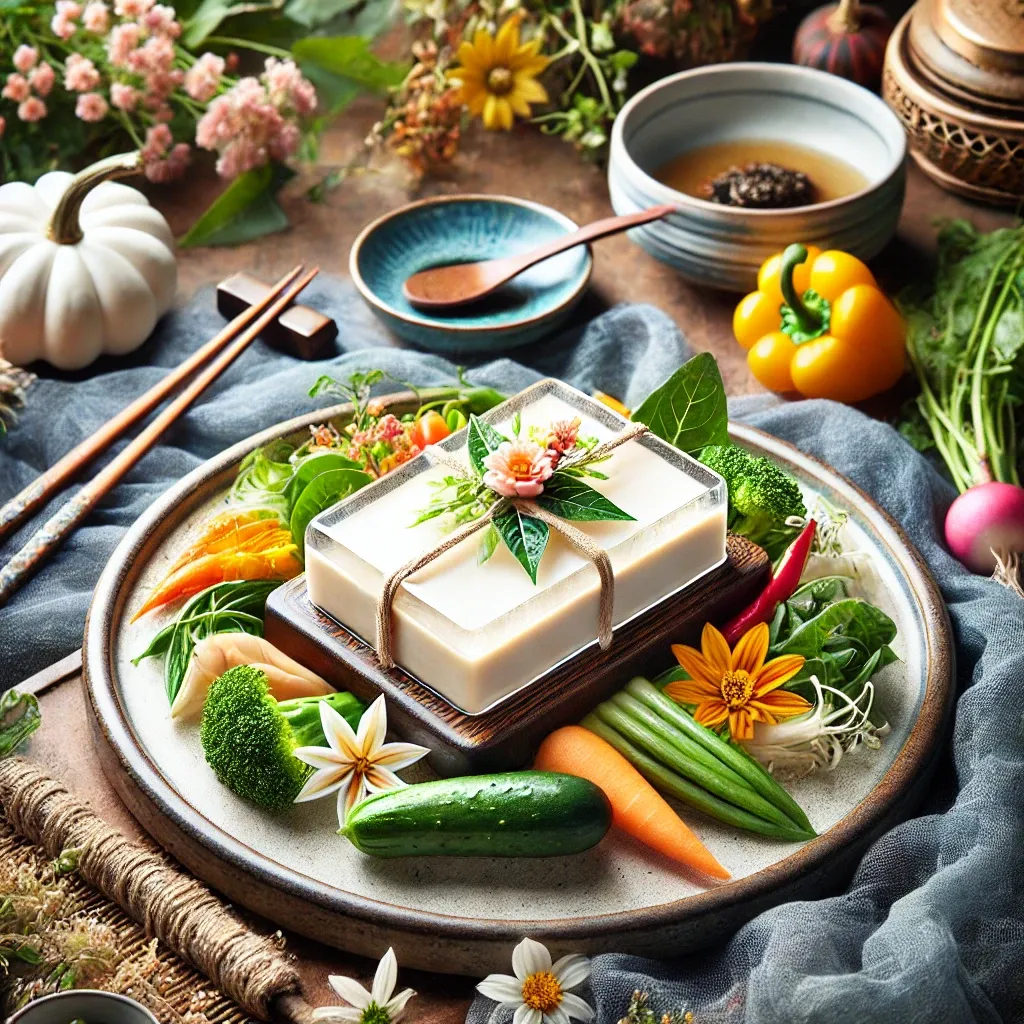Have you ever experienced the delicate flavors of Kim Kuk, a clear tofu that aligns perfectly with seasonal ingredients? Discover the beauty of seasonal food, and explore how Kim Kuk fits into the ever-changing seasons of good food and tea.
Kim Kuk, a type of clear tofu, represents a harmonious blend of texture and flavor, making it a standout dish in Korean cuisine. With its light and refreshing qualities, Kim Kuk is not only delicious but also embodies the principles of eating with the seasons. In this article, we’ll explore the different aspects of Kim Kuk, including how it aligns with seasonal food traditions, enhances the enjoyment of good tea, and its place in the broader cultural landscape of Korean cuisine.
Good Food and Kim Kuk
When we talk about good food, we often think of nourishment and balance. Kim Kuk is a perfect example of this philosophy. This clear tofu is made from soybeans, and its smooth, silky texture makes it an ideal base for highlighting the freshness of seasonal vegetables, broths, and seasonings.
In the context of seasonal food, Kim Kuk is a versatile dish. In spring, it pairs beautifully with fresh, tender greens, such as young spinach and bok choy, allowing the tofu’s delicate flavor to shine. During summer, it can be combined with cucumbers and chilled broths, creating a refreshing and cooling dish. Fall and winter bring heartier vegetables like squash and mushrooms, which complement Kim Kuk’s mild taste, adding warmth and depth to the dish.
Here are five ways Kim Kuk adapts to different seasons:
-
Spring – Paired with fresh greens and light broths.
-
Summer – Served chilled with cucumbers and refreshing herbs.
-
Fall – Combined with roasted vegetables and rich, savory broths.
-
Winter – Served hot with mushrooms and root vegetables for added comfort.
-
Year-Round – As a versatile base for any season, Kim Kuk can complement any dish.
Why does Kim Kuk fit so perfectly with the changing seasons? The answer lies in its simplicity and ability to adapt. Its subtle flavor allows it to blend effortlessly with whatever ingredients are in season, providing a clean canvas that enhances the flavors around it.
Learn more about Kim Kuk and seasonal food
Seasonal Food and the Beauty of Fresh Ingredients
Seasonal food is all about eating what’s fresh and available at different times of the year. This approach to cooking ensures that meals are not only flavorful but also nutrient-dense. Kim Kuk plays an important role in this philosophy by showcasing the freshness of ingredients. For example, when enjoying it during the fall harvest, one might find it paired with root vegetables like sweet potatoes and carrots, which are at their peak in autumn.
Eating seasonal food has a range of benefits:
-
Nutrient Density – Seasonal ingredients are at their peak flavor and nutritional value.
-
Sustainability – Eating locally and seasonally reduces carbon footprints and supports local farmers.
-
Variety – The changing seasons introduce new flavors, colors, and textures to meals.
-
Taste – Seasonal ingredients simply taste better, as they’ve had time to ripen naturally in their environment.
-
Cultural Significance – Many cultures have traditions that revolve around seasonal ingredients, connecting people to the cycles of nature.
By integrating Kim Kuk into seasonal eating habits, you tap into the essence of what it means to eat in tune with nature. The tofu, with its ability to blend with diverse ingredients, serves as a bridge between the changing seasons, keeping your meals exciting and fresh.
Discover more about seasonal food
Good Tea During the Season: A Perfect Pairing
Good tea plays an essential role in complementing seasonal food, and Kim Kuk is no exception. Whether you’re enjoying it with a delicate green tea in the spring or a robust black tea in the winter, the right tea can elevate your meal and create a well-rounded sensory experience. In Korean cuisine, tea is often served with meals, offering not only refreshment but also a way to aid digestion and cleanse the palate.
Here are five types of tea that pair wonderfully with Kim Kuk:
-
Green Tea – Light and refreshing, perfect for spring meals.
-
Jujube Tea – Sweet and soothing, a great winter companion.
-
Ginger Tea – Spicy and warming, ideal for fall dishes.
-
Barley Tea – Nutty and robust, a classic choice for any time of year.
-
Chrysanthemum Tea – Floral and calming, a perfect summer tea.
Each of these teas can complement the flavors of Kim Kuk, enhancing the seasonal ingredients and providing a refreshing contrast to the tofu’s delicate taste.
Explore the best tea pairings for seasonal food
Conclusion
In conclusion, Kim Kuk is not just a dish; it’s a reflection of the beauty and balance of seasonal food. From its adaptability with fresh ingredients to its perfect pairing with seasonal teas, Kim Kuk offers a delicious, healthy, and culturally rich experience. Embracing seasonal food means embracing the rhythms of nature, and with Kim Kuk, you can enjoy the changing seasons through your meals.
“Good food is the foundation of genuine happiness,” as the saying goes, and with dishes like Kim Kuk, we can experience that joy year-round.






